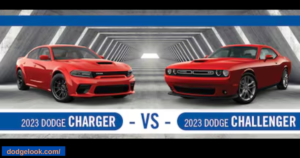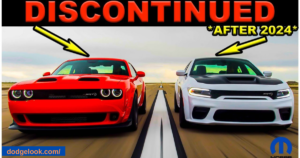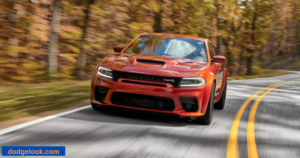The Dodge Charger has earned its place as an iconic symbol of American automotive history. With its muscular design, powerful performance, and adaptability over the decades, the Charger has continually redefined what it means to be a classic muscle car.
This article takes a journey through the evolution of the Dodge Charger, highlighting its transformations and milestones from its inception to the present day.
History of the Dodge Charger: 1960s – The Birth of an Icon
The history of the Dodge Charger began in 1966 with its debut as a mid-sized fastback coupe. Designed to compete with the Ford Mustang and Plymouth Barracuda, the first-generation Charger featured a sleek, aerodynamic body and powerful V8 engines. Its standout feature was the full-width grille with hidden headlights, giving it a futuristic look.
By 1968, the second-generation Charger arrived, cementing its place in muscle car history. With its bold Coke-bottle shape and aggressive styling, the 1968-1970 models became instant classics, also gaining fame in media such as the car chase scene in Bullitt and as the General Lee in The Dukes of Hazzard.
1970s: Muscle Meets Regulation
The early 1970s saw the Charger evolve further, with a focus on performance. Dodge introduced high-powered trims like the R/T (Road/Track) and the legendary Charger Daytona, a race-inspired model designed for NASCAR dominance.
However, as the decade progressed, stricter emissions regulations and rising insurance costs began to impact the muscle car segment.
By the mid-1970s, the Charger shifted away from its muscle car roots, transitioning into a larger, more luxury-oriented vehicle. While it still offered V8 engines, the focus leaned more toward comfort and style, catering to a broader audience.
1980s: A New Direction
The 1980s brought a dramatic change for the Dodge Charger. Reintroduced in 1981 as a front-wheel-drive compact car, this version bore little resemblance to its muscle car predecessors.
The focus during this era was on fuel efficiency and practicality, reflecting the changing priorities of car buyers.
Despite the shift, Dodge experimented with performance-oriented variants, such as the Shelby Charger, a collaboration with legendary car designer Carroll Shelby.
These models infused some excitement into the Charger lineup but were far removed from the muscle car legacy of the past.
2000s: The Charger is Reborn
After a hiatus, the Dodge Charger made a triumphant return in 2006 as a full-sized sedan. This new iteration brought back the muscle car DNA while incorporating modern design and technology. The rear-wheel-drive platform, aggressive styling, and powerful HEMI engines appealed to both nostalgic enthusiasts and new buyers.
The Charger’s reintroduction also saw the debut of high-performance trims like the SRT8, boasting a 6.1L HEMI V8 engine. This marked the beginning of Dodge’s emphasis on high-performance variants that would dominate the muscle car scene in the years to come.
2010s: The Hellcat Era
The 2010s saw the Dodge Charger reach new heights of performance and popularity. In 2015, Dodge launched the Charger Hellcat, equipped with a supercharged 6.2L HEMI V8 engine producing an astonishing 707 horsepower.
This made it the most powerful production sedan of its time and solidified the Charger’s reputation as a modern muscle car icon.
Dodge also introduced other trims like the Scat Pack and Widebody variants, offering a range of performance and styling options. The Charger continued to evolve, blending cutting-edge technology with its signature bold aesthetics and unmatched power.
2020s: The Modern Charger and Beyond
Today, the Dodge Charger remains a leader in the muscle car segment, with models ranging from the V6-powered SXT to the fire-breathing Hellcat Redeye, capable of producing over 800 horsepower.
Dodge has also embraced modern trends, offering features like advanced infotainment systems, driver-assist technologies, and customizable performance settings.
As the automotive industry moves toward electrification, Dodge has announced plans to introduce electric muscle cars, hinting at an electrified future for the Charger. While the specifics are yet to be revealed, this shift promises to maintain the Charger’s legacy of power and innovation in a sustainable format.
Conclusion
The Dodge Charger’s journey from a 1960s fastback coupe to a modern performance sedan is a testament to its adaptability and enduring appeal.
Whether as a classic muscle car, a luxury cruiser, or a high-performance beast, the Charger has consistently captured the hearts of car enthusiasts around the world. As it gears up for an electrified future, the Charger’s legacy as an American automotive icon remains firmly intact.









